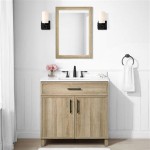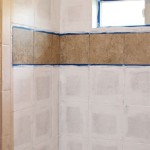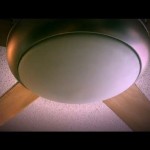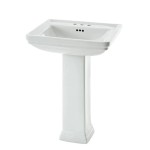What Are The Tiny Flying Insects In My Bathroom?
The persistent presence of minute, flying insects in bathrooms is a common household concern. Identifying the specific species and understanding the underlying causes of their proliferation is crucial for effective management and prevention. These small pests often thrive in the humid environment offered by bathrooms, finding sustenance in organic matter and breeding opportunities within drains and other damp areas. Misidentification can lead to ineffective treatment, highlighting the importance of accurate identification.
Several types of small flying insects are commonly found in bathrooms, each with specific characteristics and habitat preferences. These insects are generally drawn to moisture, standing water, and decaying organic material. Proper identification requires close observation of their physical features, behavior, and the locations where they are most frequently observed. Understanding the life cycle and habits of each species is also crucial in devising effective strategies for their elimination and prevention.
Common Culprits: Identifying the Usual Suspects
Several types of insects are recurrent inhabitants of the humid environment of bathrooms. Among the most frequent offenders are drain flies (also known as moth flies or filter flies), fruit flies, fungus gnats, and sometimes even small winged ants. Distinguishing between these insects is the first step towards tackling the infestation.
Drain Flies (Psychodidae): These are small, fuzzy insects, typically gray or brownish in color, measuring about 1/8 inch in length. Their wings are broad and held roof-like over their bodies, giving them a moth-like appearance. Drain flies are weak fliers, often seen hovering near drains, sinks, and toilets. Their larvae thrive in the gelatinous film that accumulates inside drains, feeding on bacteria and decaying organic matter. The adults emerge from the drains after completing their larval and pupal stages.
Fruit Flies (Drosophilidae): While commonly associated with kitchens and overripe fruit, fruit flies can also be found in bathrooms, especially if there are sources of fermenting organic matter. These small, reddish-brown insects, measuring about 1/8 inch in length, have characteristic red eyes. They are attracted to sweet, sugary substances and can breed in moist areas with decaying organic matter, such as damp mop heads or standing water in shower stalls. They reproduce rapidly, with a life cycle of about one week.
Fungus Gnats (Sciaridae): These small, dark-colored insects, approximately 1/8 inch in length, are often mistaken for fruit flies. However, fungus gnats are more slender and have longer legs and antennae. They are weak fliers and tend to stay close to the damp soil or organic matter where their larvae feed. In bathrooms, they are often associated with potted plants or damp areas where fungi can grow. The larvae feed on fungi and decaying organic matter in the soil or other moist environments. Overwatering houseplants can create ideal breeding grounds for fungus gnats.
Winged Ants (Formicidae): Occasionally, swarms of small winged ants (also known as alates) may appear in bathrooms. These are reproductive forms of ants that are seeking to establish new colonies. Their presence indicates that there is an ant colony nearby, either inside the walls or somewhere outside the building. Winged ants are typically attracted to moisture and food sources. They can be distinguished from other small flying insects by their segmented bodies, elbowed antennae, and the presence of a narrow waist.
Addressing the Root Cause: Identifying and Eliminating Breeding Grounds
Eliminating the breeding sites of these insects is the key to long-term control. Finding and addressing the source of the infestation is more effective than simply killing the adult insects. This involves identifying potential breeding areas and taking steps to eliminate the conditions that allow them to thrive.
Drain Maintenance: Drains are a common breeding ground for drain flies and fruit flies. Regular cleaning of drains to remove the accumulated organic matter is essential. This can be achieved by using a stiff brush designed for drain cleaning or by pouring boiling water down the drain. Commercial drain cleaners can also be used, but caution should be exercised, as some can be corrosive and harmful to plumbing. Enzymes-based drain cleaners are often a safer and more environmentally friendly alternative, as they break down organic matter without damaging pipes. Regular preventative drain maintenance will help prevent future infestations.
Moisture Control: Reducing moisture in the bathroom is crucial for preventing infestations of all types of small flying insects. Excess moisture provides ideal conditions for breeding and survival. Repairing leaky faucets and pipes, ensuring proper ventilation, and drying up standing water after showers or baths are essential steps. Using a dehumidifier can help to reduce humidity levels in the bathroom, making it less attractive to insects. Regularly cleaning shower curtains and mats to prevent mold and mildew growth is also important. Ensuring adequate airflow and ventilation will minimize moisture build-up.
Plant Care: If there are houseplants in the bathroom, they should be inspected regularly for signs of fungus gnats. Avoid overwatering plants, as this creates a favorable environment for fungus gnat larvae. Allow the soil to dry out slightly between waterings. Consider using a soil drench with Bacillus thuringiensis israelensis (Bti), a biological insecticide that is effective against fungus gnat larvae. Alternatively, top dressing the soil with a layer of sand or gravel can help to prevent fungus gnats from laying eggs in the soil. Proper plant care and maintenance are essential for preventing fungus gnat infestations.
Sanitation and Hygiene: Maintaining a clean and sanitary bathroom environment is crucial for preventing infestations. Regularly cleaning surfaces to remove spills and organic matter will reduce the food sources available to insects. Emptying trash cans frequently and keeping them covered will also help to prevent attracting insects. Pay particular attention to cleaning areas where water tends to accumulate, such as around sinks and toilets. Consistent cleaning routines minimize the availability of food and breeding sites.
Strategic Intervention: Effective Methods for Insect Control
Once the breeding grounds have been identified and addressed, implementing appropriate control measures can help to eliminate existing populations and prevent future infestations. This may involve a combination of mechanical, chemical, and biological control methods, depending on the type of insect and the severity of the infestation.
Trapping: Traps can be an effective way to capture adult insects and reduce their numbers. For fruit flies, a simple trap can be made by placing a small amount of apple cider vinegar or other sweet liquid in a jar with a funnel-shaped lid. The fruit flies will be attracted to the liquid, enter the trap, and be unable to escape. For fungus gnats, sticky traps placed near potted plants can capture adult insects. Commercial insect traps are also available and can be used to capture a variety of small flying insects. Regularly monitoring and emptying the traps is essential for their continued effectiveness. Trapping offers a non-toxic method for reducing insect populations.
Insecticides: Insecticides should be used with caution and only when necessary. When using insecticides, it is important to follow the manufacturer's instructions carefully and to take appropriate safety precautions. Aerosol insecticides can be used to kill adult insects on contact, but they may only provide temporary relief. Residual insecticides can be applied to surfaces where insects are likely to crawl or rest, providing longer-lasting control. However, it is important to choose insecticides that are specifically labeled for use indoors and to avoid spraying them in areas where food is prepared or consumed. Consider using insect growth regulators (IGRs), which disrupt the insect's life cycle and prevent them from developing into adults. Always prioritize less toxic alternatives whenever possible.
Professional Pest Control: In cases of severe or persistent infestations, it may be necessary to seek the assistance of a professional pest control service. Pest control professionals have the knowledge, experience, and equipment to effectively identify and eliminate insect infestations. They can also provide advice on how to prevent future infestations. A thorough inspection of the property, followed by a tailored treatment plan, is often the most effective approach for resolving complex pest problems. Professional services can offer comprehensive and lasting solutions.
Natural Remedies: Several natural remedies can also be used to control small flying insects. Essential oils such as peppermint, eucalyptus, and lavender can repel insects. A mixture of water and vinegar can be used to clean surfaces and kill insects. Diatomaceous earth (DE) is a natural powder made from fossilized diatoms that can be used to control insects. DE is non-toxic to humans and pets, but it can be harmful to insects. It works by dehydrating the insect's exoskeleton, causing them to die. Natural remedies can offer a safer and more environmentally friendly approach to pest control. They are especially suitable for situations where chemical insecticides are not desired.

How To Get Rid Of Drain Flies Moth And Prevent An Infestation Pest Defence

What Are Those Little Dark Colored Flies That Come Out Of My Bathroom Sink Uf Ifas Entomology And Nematology Department
We Are Seeing Small Flies In Our Bathroom Any Idea What Could Be Causing Them To Show Up Quora
Jab Plumbing Solutions Blog Blocked Drain Plumbers

Little Black Flying And Walking Insects In My Bathroom

Are These Drain Flies Coming Out Of My Bathroom Drains

What Are Those Flying Insects That Come Out Of The Drain

How To Get Rid Of Drain Flies 6 Easy Steps

How To Get Rid Of Drain Flies 5 Easy Ways Vinx Pest Control

How To Get Rid Of Drain Flies Terminix
Related Posts







